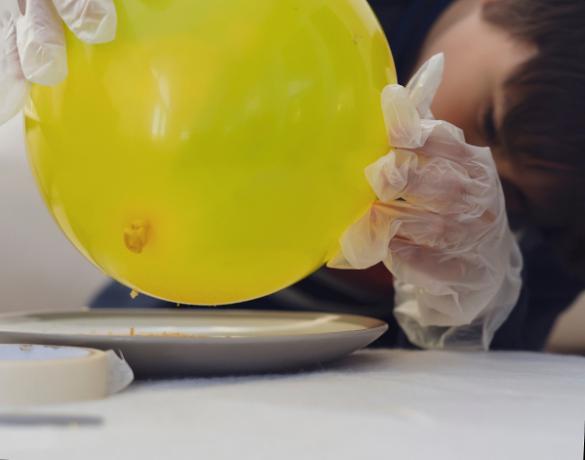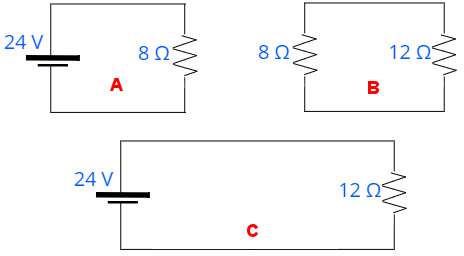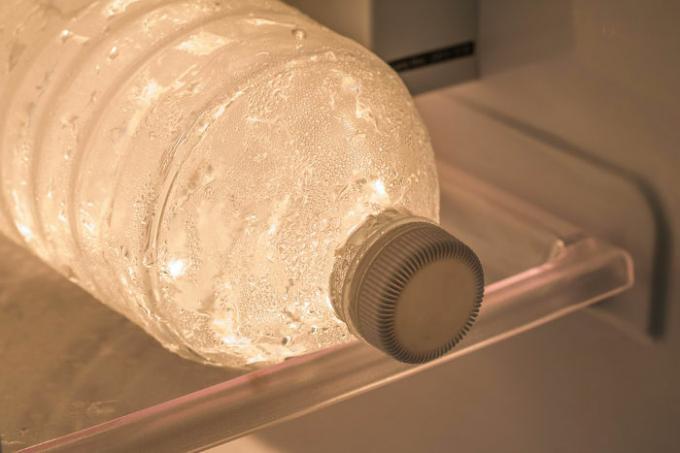Electrification processes are phenomena in which electrons are transferred from one body to another because of a difference in the amount of electrical charges existing between two or more bodies, or even by the acquisition of energy from the friction between bodies.
There are three types of electrification processes, they are: friction, contact and induction. Understanding how these processes occur, through their definitions as well as through the performance of exercises, is a fundamental part of the study of andletrostatics — one of the most prominent areas of physics among physics contents in the National High School Exam (Enem).
See too: Tips on what to study for Enem physics questions
What is electrification?
Electrification is the process of turn an electrically neutral body into an electrically charged body. Neutral bodies are those that have the same amount of protons and electrons, since these are the subatomic particles endowed with an electrical charge.
All electrification processes consist of
withdraw or supply electrons to a body. The same cannot be said of the protons, which, because they are trapped in the atomic nucleus, cannot be carried between one atom and another. Thus, when a neutral body receives electrons, its charge becomes negative., conversely, when it loses electrons, its charge becomes positive.They exist three distinct forms of electrification: by friction, by contact and by induction. In this article, we'll discuss each of them in detail, starting with the first.

frictional electrification
The electrification by friction happens mainly when two or more insulating bodies are rubbed against each other. The process of rubbing the bodies gives energy to the electrons in these materials. Electrons from insulating materials are often strongly attracted to the nuclei of their own atoms, so they need extra energy to jump from one body to another.
During frictional electrification, one of the bodies loses electrons and the other gains electrons. This way, at the end of the process, the two bodies will have loads of equal modulus but of opposite signs.
Not all bodies will be electrified when rubbed, to know which pairs of materials, when rubbed, become electrified, it is necessary to know their electrical affinity, since there are materials that tend to gain electrons, but there are also those that “prefer” to lose them. This affinity is described empirically by a table known as triboelectric series.
THE triboelectric series separates different materials according to their tendency to gain or lose electrons. in the table|1| below, for example, the firstmaterials, at the top of it, are those who tend to acquire loadspositive when rubbed, that is, they tend to loseelectrons. You latest materials, in turn, are those that tend to absorb electrons and, therefore, to present negative charges after being rubbed, check:
Material |
Human hand skin (dry and non-fat) |
Glass |
Dry and fat-free human hair |
Acrylic |
There |
Paper (sulfite, napkins, paper used to dry hands, etc.) |
Inflated balloon rubber |
Plastic PVC, PP, vinyl (straw, plastic bags, pvc linings, etc.) |
Teflon |
To know which materials are compatible, that is, which will be electrified when rubbed, we must choose those furthest from each other in the table, such as last and first, by example. By doing this, we ensure that one of the elements absorbs the electrons released by the other element with which it is rubbed.
Do not stop now... There's more after the advertising ;)
Electrification by contact
Contact electrification consists of make two conducting bodies come into contact, provided that at least one of them is preloaded. This type of electrification happens most often between materialsconductors, since the electrons in them are free and therefore endowed with great mobility. In this way, no additional energy is needed to make them jump from one body to another.
when two identical conducting bodies and electrically charged touch, electrons pass from one body to the other until the electrical charges of both are equal. Thus, if we want to know what the final charge is between them, we just need to do the arithmetic average of the loads:

The previous equation is valid only for the case where two identical conducting bodies are placed in contact, if the case in question involved the simultaneous contact between n bodies, the number of bodies should be taken into account, check:

Finally, if the bodies are from different sizes, we must realize that there will only be movement of electrons as long as there is potential difference between them, therefore, the passage of electrons will cease when the electric potential is the same for each of them.
Consider two conducting spheres A and B, of different radii, denoted RTHE and RB. In the following figure, we show the electric potential formula of each of these spheres, then we match them so that we get the formula that allows us to calculate the electric charge in these spheres after contact between them, watch:

QTHE and QB – electric charge of bodies A and B
RTHE and RB– rays of bodies A and B
UTHE meB– electrical potential of bodies A and B
induction electrification
Induction electrification consists of bring a previously charged body, called an inductor, closer to an electrically neutral conducting body, called an induced, so that the presence of the inductor's charges causes the electrons of the induced body to move in its interior, causing a polarization of loads.
THE polarization of charges it is nothing more than a separation between positive and negative charges. When polarized, the induced body is still neutral, as it has the same number of protons and electrons. Thus, for this body to become electrified, it is necessary the presence of another body, or even a means through which the electrons can flow. As a rule, a ground, which consists in connecting the induced body to earth, by means of a conducting wire.
After grounding, the electrons present in the armature body can flow towards the earth or from the earth towards the armature body, according to the sign of the charges present in the inductor body.
In abstract, the induction electrification process takes place in the following steps:
- Step 1: Approximation between the inductor and the armature.
- Step 2: Polarization of armature loads due to inductor approximation.
- Step 3: Grounding the armature, in the presence of the inductor, so that electrons can flow from the ground or to the ground.
- Step 4: Ground removal.
- Step 5: Inductor clearance.
See more: Electromagnetic induction - responsible for the emergence of electrical currents in conductive materials
Exercises on electrification processes
Question 1) (IF-SP) The following table shows the triboelectric series:
Rabbit fur |
 |
Glass | |
Human hair | |
Mica | |
There | |
cat skin | |
Silk | |
Cotton | |
Amber | |
Ebonite | |
Polyester | |
Polystyrene | |
Plastic |
Through this series, it is possible to determine the electrical charge acquired by each material when rubbed with another. Styrofoam, when rubbed with wool, becomes negatively charged.
The glass, when rubbed with the silk, will be charged:
a) positively, as it gained protons.
b) positively, as it lost electrons.
c) negatively, because it gained electrons.
d) negatively, as it lost protons.
e) with zero electrical charge, as it is impossible for the glass to be electrified.
Template: Letter B
Resolution:
Since glass appears before silk in the triboelectric series, it has a greater tendency to acquire positive electrical charges than silk, so the correct alternative is the letter b.
Question 2) (IF-SP) Lightning is a high-intensity electrical discharge that connects storm clouds to the atmosphere and the ground. The typical intensity of lightning is 30,000 amps, about a thousand times the intensity of an electric shower, and the rays travel distances of the order of 5 km.
(www.inpe.br/webelat/homepage/menu/el.atm/perguntas.e.respostas.php. Accessed on: 10.30.2012.)
During a storm, a positively charged cloud approaches a building that has a lightning rod, as shown in the following figure:

According to the statement, it can be said that, when establishing an electrical discharge in the lightning rod,
a) protons pass from the cloud to the lightning rod.
b) protons pass from the lightning rod to the cloud.
c) electrons pass from the cloud to the lightning rod.
d) electrons pass from the lightning rod to the cloud.
e) electrons and protons transfer from one body to another.
Template Letter D
Resolution:
Since the cloud is charged with positive charges, it induces the movement of electrons from the ground, in contact with the lightning rod, towards the cloud, since, as we know, the positive charges are not conducted, so the correct alternative is the letter D.
Question 3) (Mackenzie) An electrified metallic sphere, with an electrical charge equal to -20.0 μC, is placed in contact with another identical electrically neutral sphere. Then, the sphere is placed against another identical one, electrified with an electric charge equal to 50.0 μC. After this procedure, the spheres are separated.
The electrical charge stored in the sphere, at the end of this process, is equal to:
a) 20.0 µC
b) 30.0 µC
c) 40.0 µC
d) 50.0 µC
e) 60.0 μC
Template: Letter a
Resolution:
The statement talks about two processes of electrification by contact, both involving two bodies, so we will do the calculation of the charge at the end of each process, check:

By adding and dividing the electrical charges on each of the contacts, we find that the final charge should be 20.0 µC, so the correct answer is the letter a.
Grades
|1| Table taken from: http://www.rc.unesp.br/showdefisica/99_Explor_Eletrizacao/paginas%20htmls/S%C3%A9rie%20Triboel%C3%A9trica.htm
By Rafael Hellerbrock
Physics teacher



